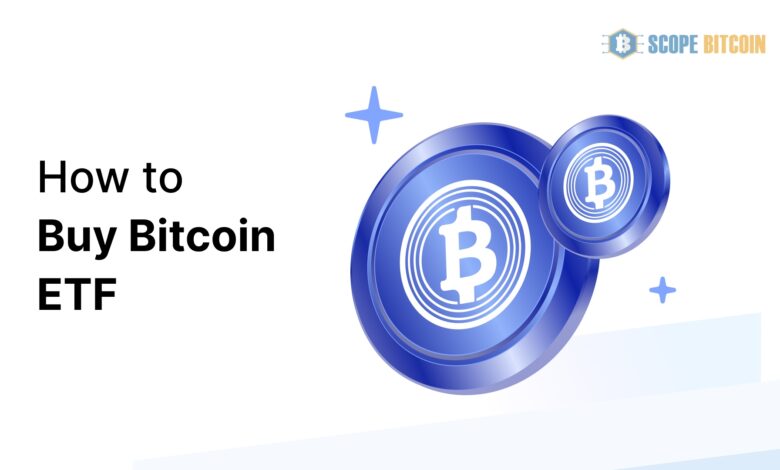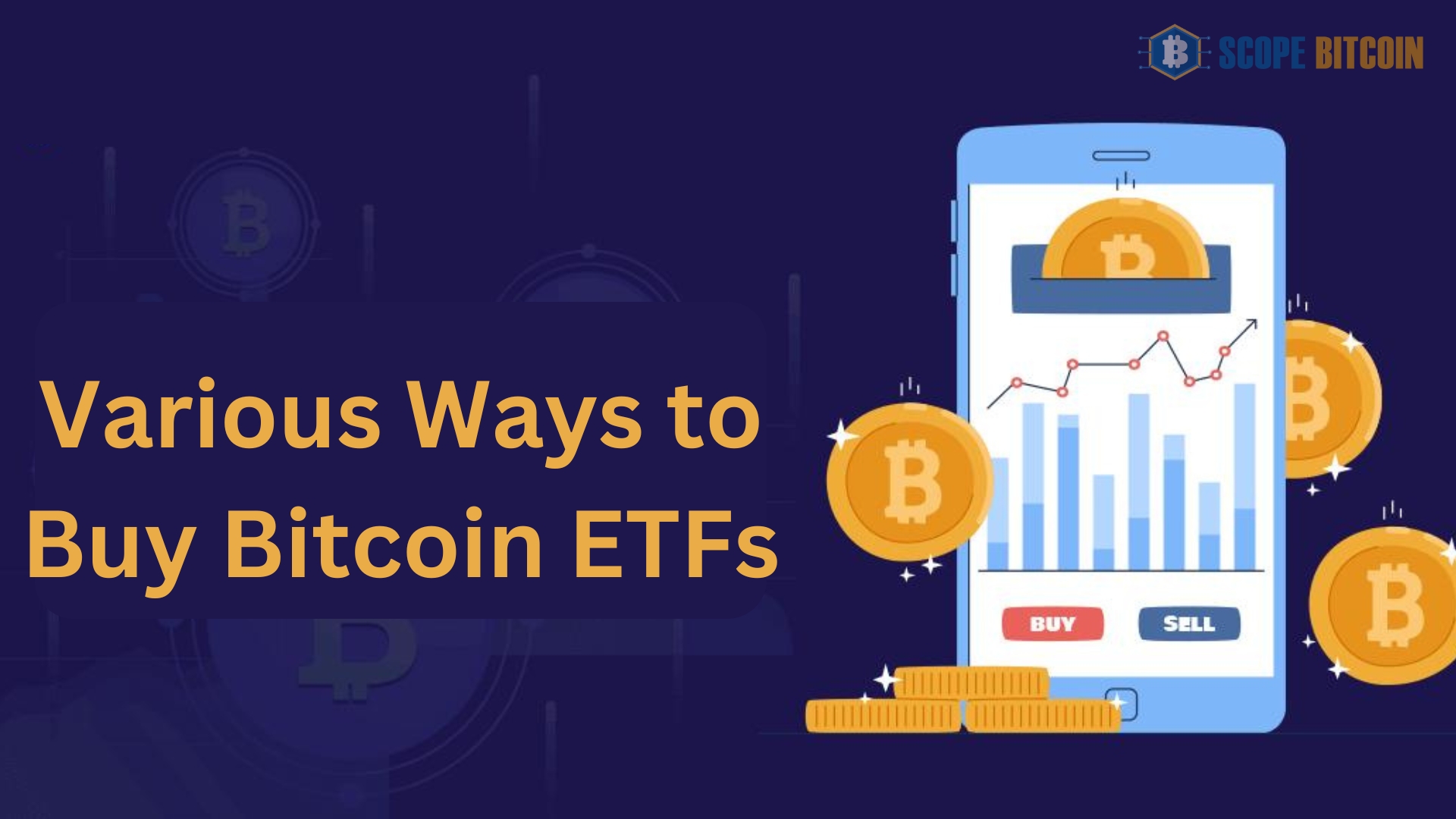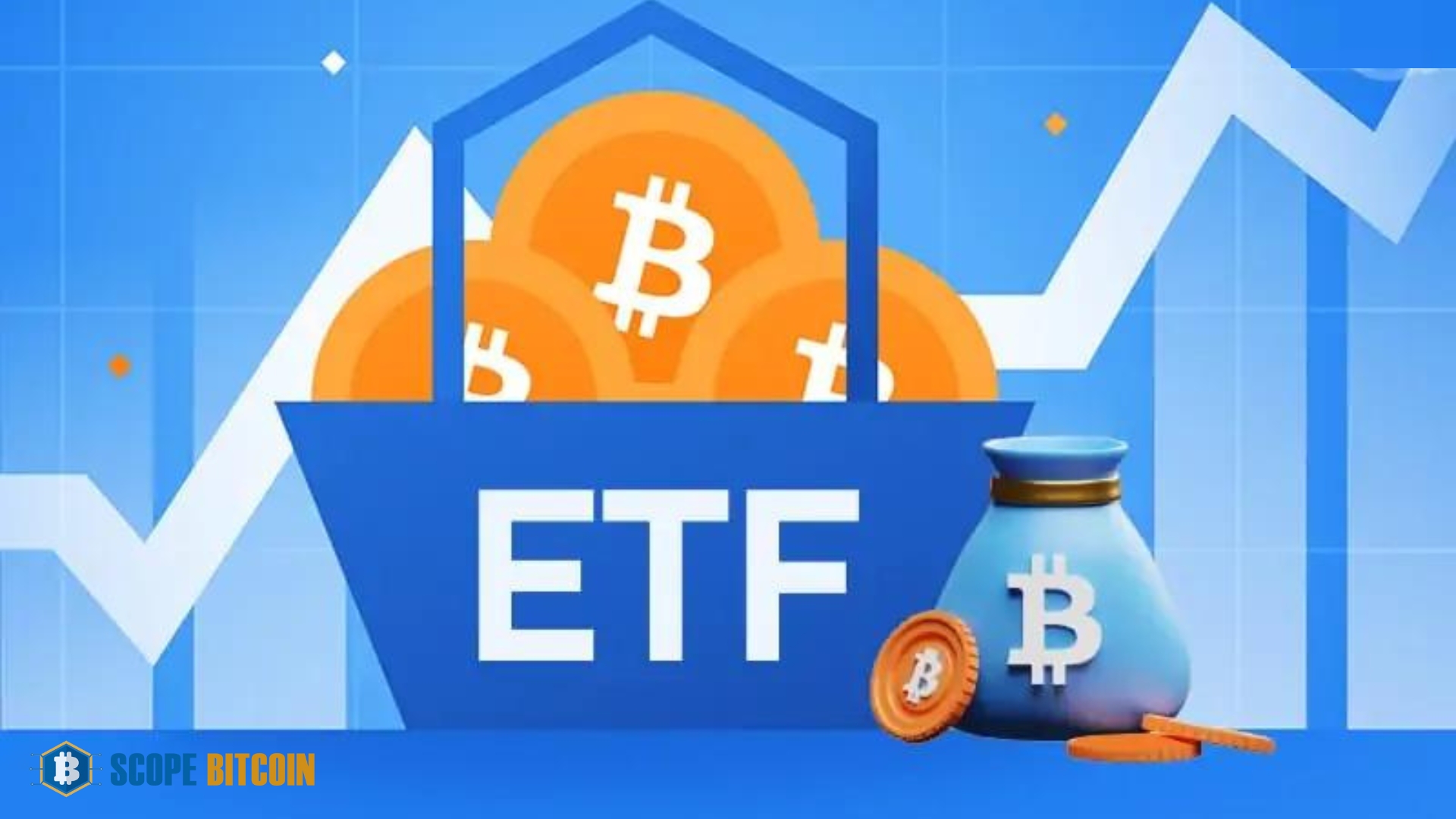
How to Buy Bitcoin ETFs: A Complete Guide 2024
Buy Bitcoin ETFs. Crypto enthusiasts worldwide celebrate after the SEC approved the first-ever group of spot Bitcoin BTC exchange-traded funds (ETFs). Fidelity, BlackRock, ARK Invest, VanEck, and Invesco were among the eleven firms whose applications were approved by the agency.
Many believe this turning point will allow regular people and major institutions to invest in the cryptocurrency with the biggest market share without owning Bitcoins. An alternative to purchasing Bitcoin directly from a cryptocurrency exchange like Binance or Coinbase is to invest in the Bitcoin Exchange-Traded Fund (ETF).
Holding Bitcoin ETFs vs. Bitcoin
Using the same system index funds use, investors can purchase an ETF that tracks the price of a related commodity or security. Investors can easily manage their holdings in BTC ETFs without the hassle of crypto wallet maintenance or cold storage arrangements.
Many organizations, including retirement plans and registered investment advisers (RIAs), have access to Bitcoin through Bitcoin exchange-traded funds (ETFs). Bitcoin is now in the possession of entities and common people who were previously unable to access it or had doubts about investing in digital assets.
When spotting an exchange-traded fund (ETF) for Bitcoin, it is a real investment in Bitcoin, not a derivative contract. Each investment will own a fraction of a Bitcoin. Alternative Bitcoin investment options include exchange-traded funds (ETFs) that allow investors to lock in a price to purchase or sell Bitcoin (BTC) at a future date and time, independent of market fluctuations. During trading hours, investors have unlimited access to buying and selling Bitcoin ETFs.
Approved Bitcoin ETFs
On January 10th, the SEC gave the go-ahead for large fund managers to offer spot Bitcoin ETFs. Listed below are some of the exchange-traded funds (ETFs) that have been approved: GBTC, IBIT, Bitwise, FBTC, ARK, BTCO, EZBC, BTCW, DEFI, BRRR, and IZBC. This list is not exhaustive and includes several other ETFs. Many U.S. stock exchanges, such as the NYSE, CBOE, and Nasdaq, will offer the authorized spot Bitcoin ETFs.
The Securities and Exchange Commission (SEC) approved Bitcoin futures exchange-traded funds (ETFs) in October 2021. These funds follow contracts to purchase or sell Bitcoin. New York Stock Exchange-listed Proshares Bitcoin Strategy ETF (BITO) was the first Bitcoin-linked exchange-traded fund (ETF) to get SEC approval.
Traditional exchange-traded funds (ETFs) often offer a diverse portfolio of assets, which is an advantage. Nevertheless, since a Bitcoin ETF is associated with only one cryptocurrency, its price fluctuations will likely mirror BTC’s.
Various Ways to Buy Bitcoin ETFs
You can purchase Bitcoin ETFs in a few different ways:
Online brokerage accounts
Most brokerages provide a search bar where customers can enter a fund’s name or ticker symbol to trade in that fund. Once spot ETFs are approved in the US, investors can purchase them through brokerages like Interactive Brokers, Charles Schwab, Fidelity, Robinhood, and many more.
Cryptocurrency exchanges
Crypto exchanges intend to launch ETFs even though they are still adjusting to a regulatory landscape that is developing at a rapid pace. You might anticipate Kraken’s ETF trading services in the year 2024. Not one but eight of the exchange-traded funds (ETFs) authorized by the SEC are held by Coinbase, another crypto heavyweight.
Financial advisers
The Bitwise 2024 benchmark poll showed interest in crypto equities ETFs among U.S. financial advisors. Findings indicated that 19% of advisors can purchase cryptocurrency in client accounts. The poll also showed that by 2024, nearly all advisors (98%) intend to keep or expand their clients’ crypto exposure in their portfolios.
Robo-advisors
If you’re looking for a low-cost, easily accessible, automated investing platform, robo-advisors like Betterment and Wealthfront can help you buy Bitcoin ETFs. New and seasoned investors can benefit from their low minimum balance requirements for cryptocurrency-related exchange-traded funds (ETFs).
Robotic advisors are known for automated portfolio management tailored to each investor’s goals and comfort level with risk. These tasks include selecting investments, rebalancing portfolios, and asset allocation.
Traditional banks
The investing division of a conventional bank is the usual place for an individual to open a brokerage account to buy Bitcoin ETFs. Traders can search for their preferred Bitcoin ETF when funded and activated their accounts.
After learning about the ETF, the individual can buy shares using the bank’s brokerage services like any other stock or ETF. Bitcoin ETFs’ availability and access depend on the client’s location and the bank’s services. Additionally, conventional banks may take some time before they start providing Bitcoin ETFs to their clients as an investment alternative due to the ongoing evolution of the cryptocurrency regulatory landscape.
Directly from ETF issuers
Investors need to visit the websites of the ETF issuers to purchase the product. Buying an ETF, though, might necessitate a broker account. For example, users are prompted to choose one of the issuer’s partner brokers when they visit the Hashdex website.
How to Buy Bitcoin ETFs
The following is the procedure to follow to purchase Bitcoin exchange-traded funds (ETFs) using brokerage services:
Step 1: Open a brokerage account
To complete the Know Your Customer checks and log in, download a brokerage services app like BlackRock or Robinhood or open their web portals.
Step 2: Fund the account
The trader must fund their brokerage account using their linked bank account, checking account, or savings account. They can also transfer funds from another broker via wire transfer, check deposit, or other options.
Step 3: Research available Bitcoin ETFs
Investors contemplating purchasing a Bitcoin exchange-traded fund (ETF) should know important features such as the issuer and the fee ratio linked with the ETF. The expense ratio is the issuer’s cost for administering the exchange-traded fund (ETF). This fee might affect the overall returns of the investment.
Step 4: Select preferred Bitcoin ETFs
Investors can delve into a range of Bitcoin ETFs, selecting those that align with their investment preferences and goals. This process involves evaluating various funds to identify the ones that best meet their criteria.
Step 5: Place an order
With the funds already available in the account, one may now place an order to purchase the chosen ETFs. To accomplish this, one must determine the number of shares they desire to acquire. Then, enter the ticker symbol of the Bitcoin exchange-traded fund (ETF) into the designated field offered on a brokerage account’s trading or order placement interface. The investor can select a market, limit, or stop order, depending on their trading technique.
The investor can submit the order once they have checked the specifics to confirm accuracy. After that, the brokerage will carry out the order by the terms provided, and the investor’s portfolio will be updated to include the Bitcoin ETF shareholder shares.
Step 6: Monitor your investments regularly
By regularly reviewing their investments, investors can better react to market changes and steer their investments in the appropriate direction.
Final Thoughts
With the eleven spot Bitcoin ETFs approved by the SEC, both institutional and ordinary investors now have a chance to invest in a more regulated market. To stay competitive, several ETFs have reduced the fees associated with product management. The cryptocurrency ecosystem is anticipated to see a substantial influx of capital from Bitcoin ETFs. Afterward, Bitcoin might become a part of the mainstream international financial system if other nations adopt it.
Even though regulators have only approved Bitcoin ETFs, many hope other big cryptocurrencies’ ETFs will also be approved. Although the exact timing is still up in the air, the cryptocurrency industry is hopeful, seeing the recent approvals as a precursor to more expansive Bitcoin ETFs.







